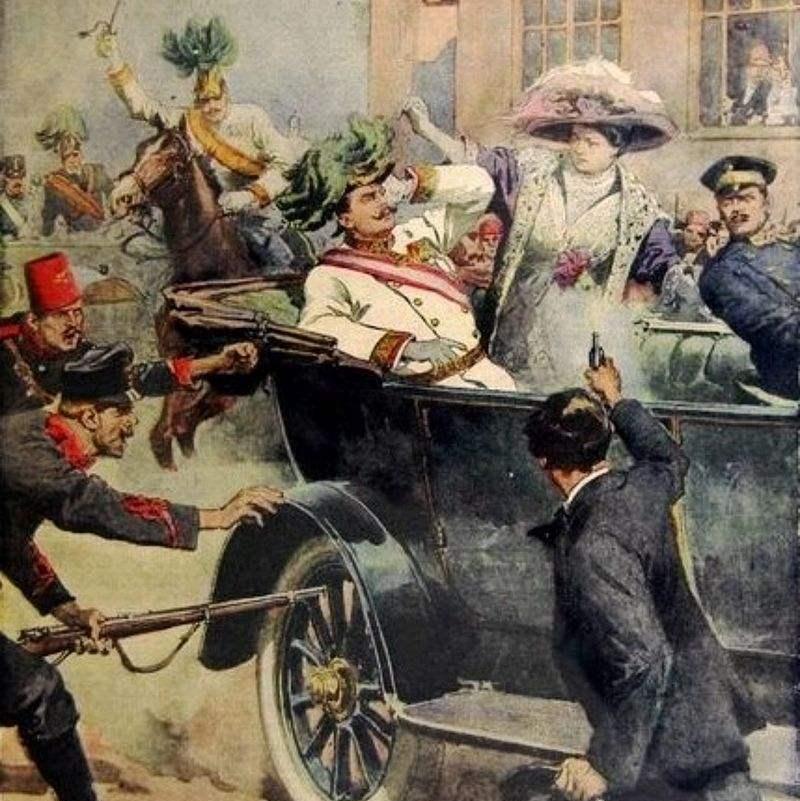The outbreak of the First World War had a lot to do with the Austro-Hungarian Empire.
If Archduke Ferdinand, the heir to the throne of the Austro-Hungarian Empire, does not go to Sarajevo, Bosnia, to hold a large-scale military exercise; if after participating in the military exercise, they leave quickly instead of flaunting the city of Sarajevo; if archduke Ferdinand and his wife are shot and killed, the Austro-Hungarian Empire will exercise a little restraint instead of hastily declaring war on Serbia... The First World War would not have erupted so suddenly.

Who was the Austro-Hungarian Empire? Why is it so horizontal? What happened next?
Let's answer one by one.
The Austro-Hungarian Empire was an ancient country. Its predecessor dates back to the Founding of the Holy Roman Empire in 962, when austria-Hungary was a state within the Holy Roman Empire. In the 13th and 15th centuries, the Austro-Hungarian Empire began to rise, constantly annexing small countries. By the 19th century, the Austro-Hungarian Empire, which consisted of the Austrian Empire and the Kingdom of Hungary, had become a European superpower.
In terms of land area, the Austro-Hungarian Empire is vast and ranks second in Europe after Russia.
In terms of population, Austria-Hungary had more than 50 million people, ranking third in Europe after Russia and Germany.
In addition, the Austro-Hungarian steel arms industry ranked fourth in Europe, and the heavy artillery weapons produced by the Skoda Arsenal ranked first in Europe. Agricultural products are abundant and rank first in Europe. Industrial and agricultural resource reserves rank fourth in Europe. In 1913, the industrial output value of the Austro-Hungarian Empire accounted for 4.4% of the world, when the industrial output value of the world's seven major powers accounted for 35.8% of the world's industrial output, Germany 15.7%, Britain 13.6%, France 6.1%, Russia 8.2%, Italy 2.4%, Japan 2.0%, Austria-Hungary ranked sixth in the world, Europe fifth...
Therefore, the Austro-Hungarian Empire also belonged to the role of walking sideways in Europe, and it is no wonder that in the Sarajevo incident, it was so bullish that no one could stop it.
By the way, in 1900, the Eight-Power Alliance invaded China, and the Austro-Hungarian Empire also sent hundreds of people to the expeditionary force composed of Britain, the United States, France and other countries.
During World War I, austria-Hungary fought mainly against Russia. In the Battle of Galicia, the Austro-Hungarian Empire performed remarkably well in the first three weeks of the war, but when the battle entered the attrition phase, Russia had a steady supply of troops to replenish, while the Austro-Hungarian Empire was weak. Eventually, austria-Hungary was overthrown by Russia.
Another adversary facing Austria-Hungary was Italy. Italy was originally a member of the Triple Alliance of Germany, Austria-Hungary and Italy, but after the outbreak of World War I, Italy "rebelled" to the Allied camp and inserted a knife in the back of austria-Hungary.
Austria-Hungary hated Italy and fought fiercely on the border with Italian troops. The Austro-Hungarian Empire, though unable to defeat Russia, was able to resist Italy. On the Gorizia Front, 3 million Italian troops fought 12 battles on the Isonzo River, but none of them were able to break through the Austro-Hungarian line, which deployed less than 1 million men on the entire line.
In 1917, after all 12 of Italy's Isonzo Offensives, the Austro-Hungarian Empire launched a fierce counterattack, beating Italy with no counter-attack. If it were not for the lack of sufficient heavy artillery in the hands of austria-Hungary and the small number of troops, it would have been possible to invade Italy and force Italy to sign a surrender agreement. The course of the First World War may change as a result.
All in all, due to the defeat of the German army on the Western Front, by 1918 the defeat of the Allies was a foregone conclusion. On November 3, 1918, austria-Hungary had to surrender.
World War I ended, and the Austro-Hungarian Empire also ushered in the fate of the disintegration. In the years that followed, the Austro-Hungarian Empire was torn apart and divided into 10 states: Austria, Hungary, the Czech Republic, Slovakia, Serbia, Montenegro, the Republic of Croatia, the Republic of Slovenia, the Republic of Macedonia, Bosnia and Herzegovina.
The Allies recognized these new States and guaranteed the legitimacy of the new borders with a series of treaties.
The Austro-Hungarian Empire, which had existed for more than 1,000 years, disappeared.